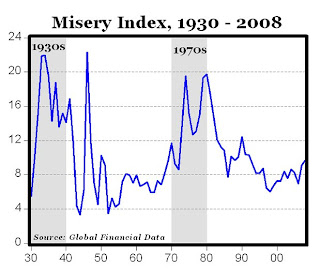According to Brian Wesbury and Bob Stein (click here), “Inflation is the leading menace to the economy.” Although I usually agree with their postulate, I don’t see inflation as much of a “menace” right now. The core CPI inflation on an annual basis was 2.5% in July, barely above the 10-year average of 2.21%, below the levels close to 3% between mid-2006 to early 2007, and way below the 4.58% average since 1970 (see graph below).
IMHO, unless and until the core CPI inflation starts to rise, inflation is not a big problem. For example, inflation was a huge problem in the 1970s and early 1980s, but it was when CORE CPI INFLATION was increasing by double-digits, not just oil, energy and food prices. By definition, inflation is a phenomenon when all prices, in general and on average, are rising, not just food and energy. With core inflation so low and stable, I don’t see how inflation can be a menace. And with oil prices plummeting and the dollar soaring, look for August inflation, both overall and core, to moderate.


